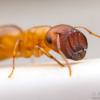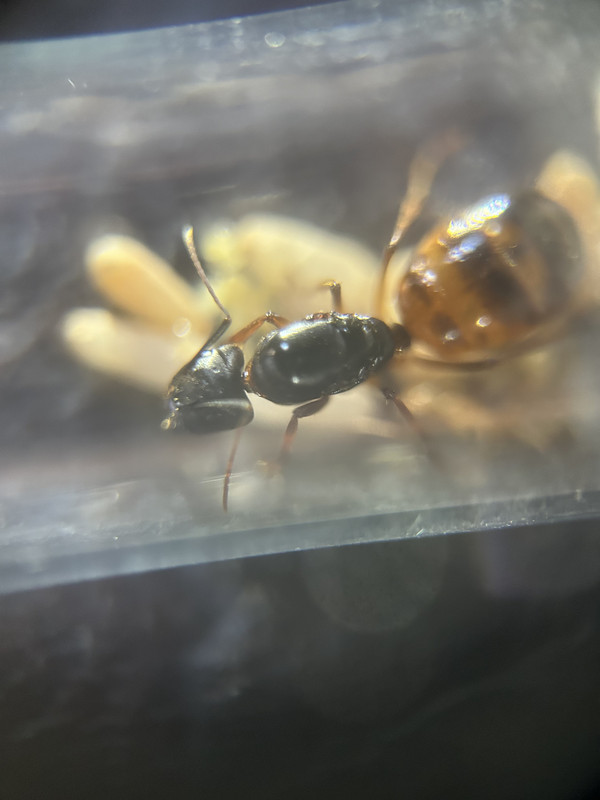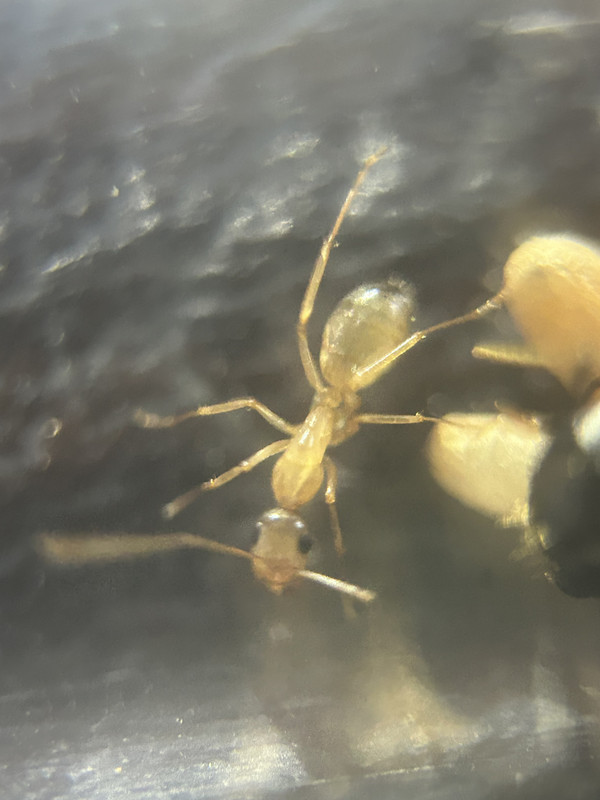She was found in SoCal, specifically Tujunga, on a tree at a park connected to a sandy trail at about 9 PM. I'm assuming she is a species of Camponotus that likes to dig as I've seen worker ants that look like her that nested in the ground on the trail. I've also seen the same species come in straight battalions out some grass and plants, were talking majors the same size of her. She is about 10mm and has little hairs on her body. Also included a pic of a nanitic.






















